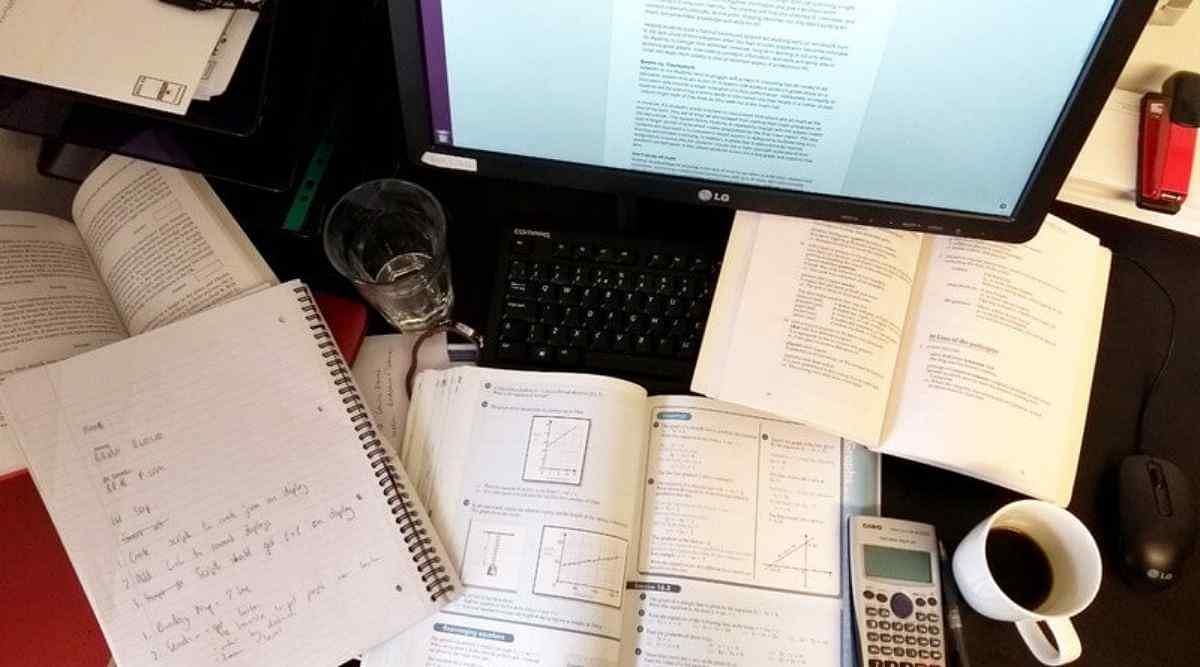Electric current is the flow of electrons through a complete circuit of conductors. Check out this article for details about current electricity and related topics.
Table of Contents
Current Electricity is defined as the electricity generated due to the flow of electrons from one section of the circuit to another. Discovered by Benjamin Franklin, current electricity is defined as a stream of charged particles, such as electrons or ions, moving through an electrical conductor or space. The SI Unit of Electric Current is Ampere.
What is Current Electricity?
Current Electricity refers to the flow of electricity in an electronic circuit, and to the amount of electricity flowing through a circuit. It is measured in amperes (A). The larger the value in amperes, the more electricity flows in the circuit.
Negatively-charged electrons are removed from atoms, thus leaving the atoms as positive ions. The potential difference between the two particles causes the electrons to be attracted back, producing a flow of electric charge known as current electricity. The two kinds of current electricity are Direct Current (DC) and Alternating Current (AC).
Some examples of current electricity are starting a car, cooking on an electric stove, turning on a light, watching TV, shaving with an electric razor, playing video games, using a phone, charging a cell phone, etc.
Electric Current Formula and Unit
The formula for electric current is "I = Q/t", where "I" is the electric current in Amperes (A), "Q" is the charge in Coulombs (C), and "t" is the time in seconds (s).
The unit of the electric current is the Ampere (A), named after André-Marie Ampère, a French mathematician and physicist who was one of the founders of the science of electromagnetism.
Difference Between Electromotive Force (EMF) and Voltage
Electromotive Force (EMF) is a type of energy which forces a unit positive charge to move from the positive to the negative terminal of the source and separates them from each other. It is an energy transfer to an electric circuit per unit of electric charge, measured in volts. Electromotive Force is the electric potential produced by an electrochemical cell or by changing the magnetic field. The SI unit of EMF is volts (V). EMF is the commonly used acronym for electromotive force and its symbol is ε.
Voltage is the difference in electric potential between two points and the voltage between two points is equal to the work done per unit of charge against a static electric field to move a test charge between them. Voltage is also known as electric tension, electric pressure, or (electric) potential difference. It is the pressure from the power source of an electrical circuit that pushes charged electrons through a conducting loop, thus enabling them to do work such as illuminating light. In short, voltage = pressure, and it is measured in volts (V).
Types of Current Electricity
The two types of current electricity are Direct Current (DC) and Alternating Current (AC).
Direct Current (DC)
Direct Current is the current electricity whose direction remains the same and is defined by the constant flow of electrons from a region of high electron density to a region of low electron density. DC is used in several household appliances and applications that involve the usage of a battery.
Alternating Current (AC)
Alternating Current is the current electricity that is bidirectional and is responsible for changing the direction of the charge flow. The bi-directionality of the current electricity is caused by a sinusoidally varying current and voltage that reverse directions, creating a periodic back-and-forth motion for the current. The electrical outlets at our homes and industries are supplied with AC.
How is Current Electricity Generated?
Current electricity can be generated through the methods mentioned below:
- By moving a metal wire through a magnetic field (Both AC and DC can be generated by this method)
- By a battery through chemical reactions (DC can be generated through this method).
Relative Motion Between Magnetic Field and Coil
According to electromagnetic induction, when there is relative motion between a magnet and a coil, a varying magnetic field is produced which induces emf. Now, let us consider a setup which must be a part of an electric circuit, otherwise the electrons have nowhere to go and current electricity will not be generated.

The direction of the magnetic field and the wire will establish the direction of the current through the wire.
Current Electricity vs Static Electricity
Static electricity is caused by the accumulation of charge on the surface of the body whereas current electricity is caused by the movement of charge or electrons. Static electricity is the electric charge that is built up on the surface of materials/substances. The charges remain static until they are discharged or grounded. More differences between current electricity and static electricity are shown in the table below:
| Current Electricity | Static Electricity |
| The electricity due to the flow of electrons is known as current electricity. | The electricity built on the surface of a substance is known as static electricity. |
| Current electricity is generated by power plants and batteries. | Static electricity is generated when two objects are rubbed against each other resulting in charge transfer. |
| Current electricity is controlled. | Static electricity is uncontrolled. |
| An example of current electricity is the electricity used to power up electronic devices. | An example of static electricity is the shock experienced while touching a doorknob. |


























POST YOUR COMMENT